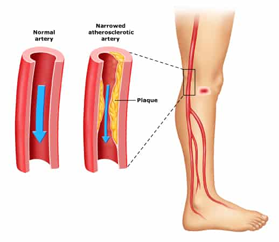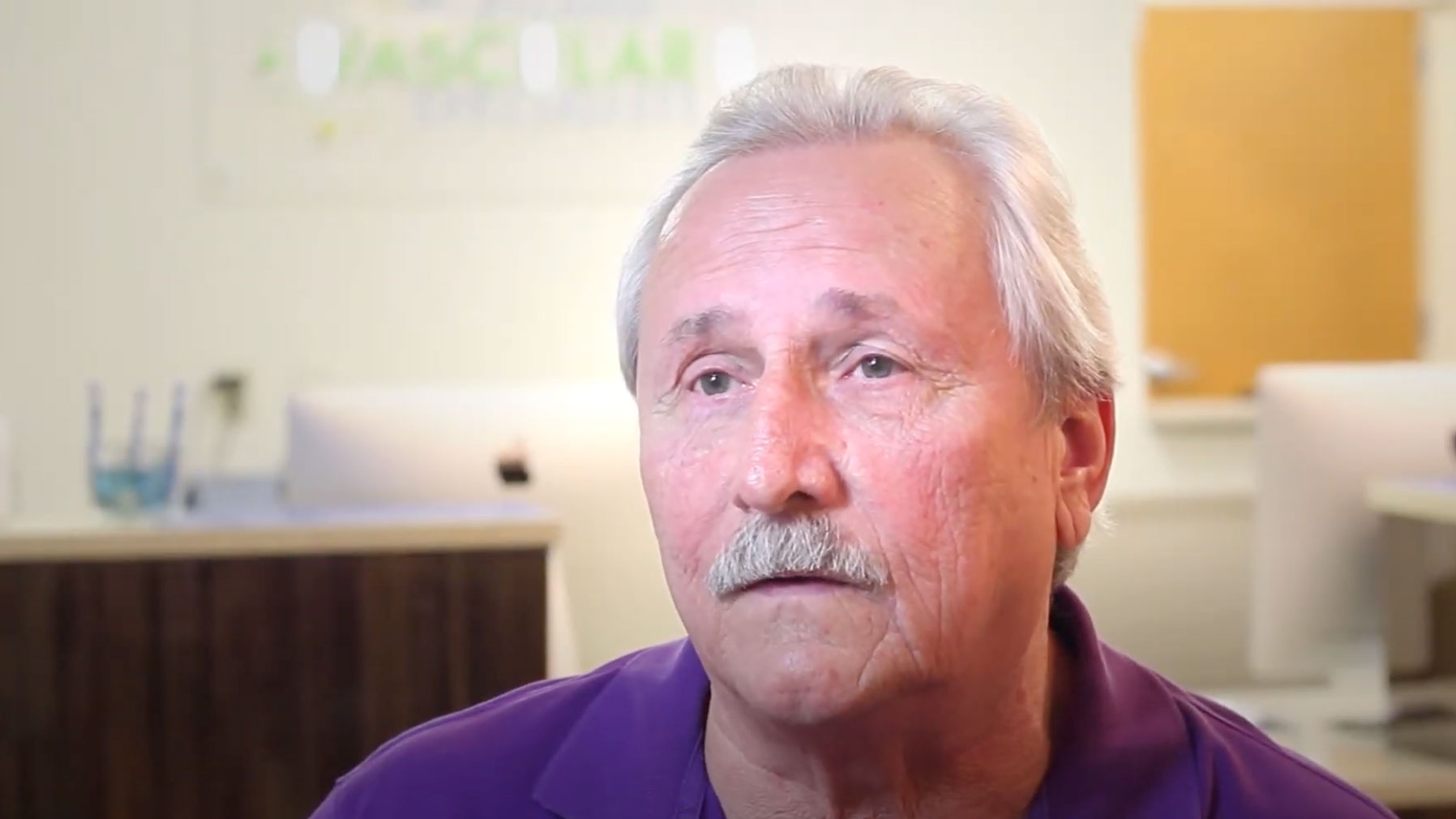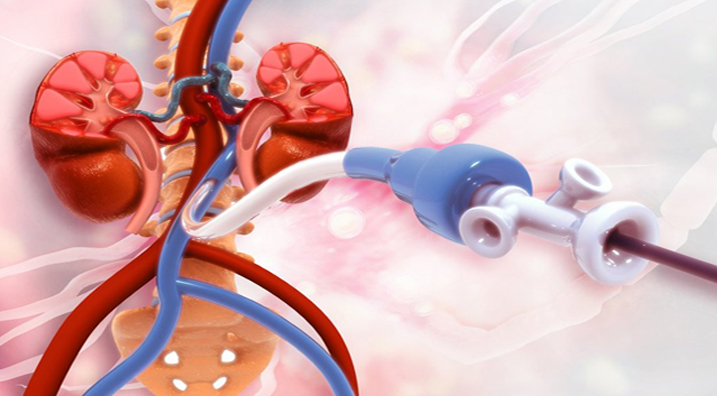- Doppler Ultrasound imaging is performed as the first step in testing blood flow for patients complaining of leg pain. Doppler ultrasound uses sound waves to evaluate blood as it flows through the blood vessels.
- Duplex Ultrasound is an additional test that your healthcare provider may request if the Doppler ultrasound results are abnormal. The Duplex uses ultrasound technology to look at the artery and find the blockage that is causing the decreased blood flow.
- Ankle-Brachial Index (ABI) is a very simple and noninvasive test used to diagnose PAD. It compares the blood pressure in your ankle to the blood pressure in your arm, looking for any discrepancy.
- Toe Pressures use an infrared sensor to determine the small vessel vascular condition in relation to the ankle. Toe pressures may be useful in cases of unsuspected vascular disease and are very helpful for evaluating people with calcified vessels, non-healing wounds, and/or diabetic feet.
When these tests are used in combination, the results provide a detailed look at the contributing causes of PAD. Each test either confirms or eliminates the possibility of a blockage and allows a vascular surgeon to place the location of blockages throughout your body.
{,}show_first{:}{|}tab_name{:}How Is It Treated?{,}tab_content{:}PAD treatment depends on the severity of your condition. Treatment options may include:
- Lifestyle changes
- Medications
- Minimally-invasive outpatient procedures
- Open vascular surgery in a hospital setting
At Maryland Vascular Specialists, we offer a strong team of fellowship-trained and board-certified vascular surgeons that use the most up-to-date techniques. We are experts in the diagnosis of PAD and can use minimally-invasive endovascular procedures to treat artery and vein disorders of many types.
{,}show_first{:}{|}tab_name{:}Risk Factors{,}tab_content{:}You are at risk of PAD if any of the following apply to you:
- You are age 50 or older
- You are male, because men are more prone to PAD than women
- You have high blood pressure or a family history of high blood pressure
- You have diabetes
- You smoke or used to smoke
- You have high cholesterol
- You are obese
- You are sedentary and get very little exercise
- You have a family history of vascular problems
Our goal is to improve the quality of your life and give you the best outcome possible. If you have leg pain, leg cramps, or other PAD symptoms, or if someone in your family seems to have these symptoms, please seek help as soon as possible.
With care from a vascular specialist or surgeon, you can limit further damage and support body-wide health. Please contact us to discuss treatment options and schedule a consultation with Maryland Vascular Specialists today.
DOWNLOAD FREE EBOOK – WHAT IS PERIPHERAL ARTERIAL DISEASE?
Are you one of the 18 million Americans with PAD? Learning more about risks, symptoms, and treatment options could save your life. See our Conditions & Symptoms here.
{,}show_first{:} )What is Peripheral Artery Disease (PAD)?
In the U.S. alone, more than 18 million people have symptoms of PAD, or peripheral arterial disease, which is also known as peripheral vascular disease. PAD causes limited circulation throughout the body, restricting the vital blood flow that nourishes the body’s pathways and systems.
PAD commonly affects the body’s limbs, where reduced circulation can lead to amputation of the fingers, arms, toes, feet, and lower legs. It can also be an indication of fatty deposits in the body’s arteries, known as atherosclerosis, which puts the heart and brain at risk.
While peripheral arterial disease is a relatively common condition, many people are unaware that they have it. For this reason, the medical community works to build awareness of Peripheral Arterial Disease and the importance of early detection. September is PAD Awareness Month.
Symptoms
In the early stages of peripheral arterial disease, there may be no detectable symptoms from the patient’s point of view. However, if left undiagnosed and untreated, PAD will increase the blockage of normal blood flow and worsen over time.
PAD symptoms include:
- Pain and/or dull aching in the legs
- Cramping in the legs, thighs, or hips
- Difficulty with walking
- Pain while resting your legs or feet
- Non-healing sores on the legs or feet
- A sensation of coldness in the limbs
- Hair loss or discoloration on the legs or feet
- Erectile dysfunction in men
If you have persistent leg pain that ceases when activity ends and you are resting, this is called intermittent claudication and can be an indication of PAD. Sometimes, people with PAD experience it as body-wide aching or a throbbing sensation in the limbs, but they fail to seek medical attention because the pain subsides when they are sitting or sleeping.
Because there is variety in the way people experience PAD, it is very important to request a consultation with Maryland Vascular Specialists for an expert examination. Early detection prevents PAD from creating a life-threatening health crisis.
Your doctor at Maryland Vascular Specialists may perform a variety of non-invasive vascular diagnostic tests, or your regular healthcare provider may order these tests from an accredited vascular lab to diagnose Peripheral Arterial Disease:
- Doppler Ultrasound imaging is performed as the first step in testing blood flow for patients complaining of leg pain. Doppler ultrasound uses sound waves to evaluate blood as it flows through the blood vessels.
- Duplex Ultrasound is an additional test that your healthcare provider may request if the Doppler ultrasound results are abnormal. The Duplex uses ultrasound technology to look at the artery and find the blockage that is causing the decreased blood flow.
- Ankle-Brachial Index (ABI) is a very simple and noninvasive test used to diagnose PAD. It compares the blood pressure in your ankle to the blood pressure in your arm, looking for any discrepancy.
- Toe Pressures use an infrared sensor to determine the small vessel vascular condition in relation to the ankle. Toe pressures may be useful in cases of unsuspected vascular disease and are very helpful for evaluating people with calcified vessels, non-healing wounds, and/or diabetic feet.
When these tests are used in combination, the results provide a detailed look at the contributing causes of PAD. Each test either confirms or eliminates the possibility of a blockage and allows a vascular surgeon to place the location of blockages throughout your body.
PAD treatment depends on the severity of your condition. Treatment options may include:
- Lifestyle changes
- Medications
- Minimally-invasive outpatient procedures
- Open vascular surgery in a hospital setting
At Maryland Vascular Specialists, we offer a strong team of fellowship-trained and board-certified vascular surgeons that use the most up-to-date techniques. We are experts in the diagnosis of PAD and can use minimally-invasive endovascular procedures to treat artery and vein disorders of many types.
You are at risk of PAD if any of the following apply to you:
- You are age 50 or older
- You are male, because men are more prone to PAD than women
- You have high blood pressure or a family history of high blood pressure
- You have diabetes
- You smoke or used to smoke
- You have high cholesterol
- You are obese
- You are sedentary and get very little exercise
- You have a family history of vascular problems
Our goal is to improve the quality of your life and give you the best outcome possible. If you have leg pain, leg cramps, or other PAD symptoms, or if someone in your family seems to have these symptoms, please seek help as soon as possible.
With care from a vascular specialist or surgeon, you can limit further damage and support body-wide health. Please contact us to discuss treatment options and schedule a consultation with Maryland Vascular Specialists today.
DOWNLOAD FREE EBOOK – WHAT IS PERIPHERAL ARTERIAL DISEASE?
Are you one of the 18 million Americans with PAD? Learning more about risks, symptoms, and treatment options could save your life. See our Conditions & Symptoms here.

